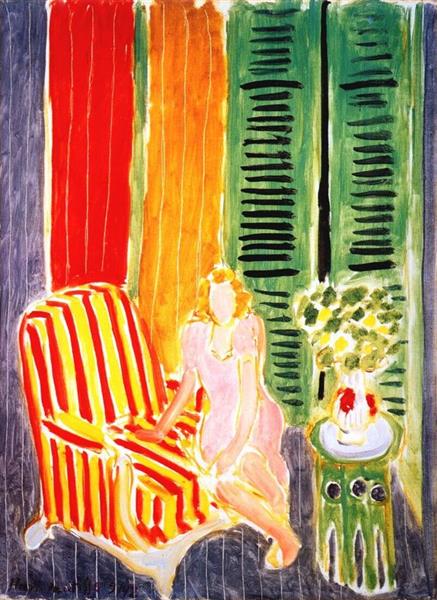Description
The work "Girl in Pink in An Interior" by Henri Matisse, created in 1942, is a piece that exemplifies the author's ability to combine color and form in a unique and unmistakable way. In this painting, Matisse introduces us to a world of vibrant simplicity and elegance through a young girl dressed in pink situated in a harmonious and cozy interior.
The composition of the work is defined by its simplicity and careful use of space. The protagonist, a young girl dressed in a vivid pink tone, is seated in a room furnished with minimalist but elaborately crafted elements, which adds an air of intimacy to the environment. This young girl is the central focus of the piece, which is typically Matissean: an attempt to capture the human essence in its purest form. The figure is composed of soft lines and curves, which gives a sense of tranquility and stability to the scene.
What is distinctive in "Girl in Pink in An Interior" is, without a doubt, the use of color. Matisse, known for his mastery in the application of color, creates here a vivid contrast between the girl's pink dress and the background composed of neutral and warm tones. The pink, as the predominant color in the central figure, not only symbolizes youth and vitality but also acts as a focal point that immediately catches the observer's eye. This contrast is a reflection of the Fauvist style that Matisse, along with others, developed years before, where color and emotion dominated over naturalistic representation.
Other elements in the room, such as the table with a vase and a plant, along with the curtains and other decorative objects, are rendered in a softer color palette. These details not only enrich the composition but also establish a dialogue between the space and the figure. Although they seem like accessory mentions, these objects contribute significantly to the internal narrative of the painting. They tell a story of domesticity and calm, characteristic of Matisse's late period when his art achieved notable introspection and serenity.
The choice of the domestic interior as a motif is crucial. During the early years of the 1940s, while the world was engulfed in World War II, Matisse found refuge in creating his idyllic and colorful interiors. These personal spaces became a place of comfort and beauty in a time of great turmoil. In this sense, "Girl in Pink in An Interior" is not only an aesthetic work but also a silent manifesto of peaceful resistance and a search for beauty in times of adversity.
In comparison with other works by Matisse, this painting shares certain similarities with his "Odalisque" series and other representations of women in interiors, where the female figure and the compact environment form an integral whole. However, "Girl in Pink in An Interior" stands out for its more restrained use of color and its apparent simplicity, which actually masks a deep understanding of composition and space usage.
In summary, "Girl in Pink in An Interior" is an eloquent testimony to Henri Matisse's mastery of color and form. The work not only reflects the artist's technical skill but also his ability to capture moments of calm and serenity amidst chaos. It is a piece that invites contemplation and reveals the richness of simplicity, where every element, every tone, and every line contribute to a perfect harmony that only a master like Matisse could achieve.





